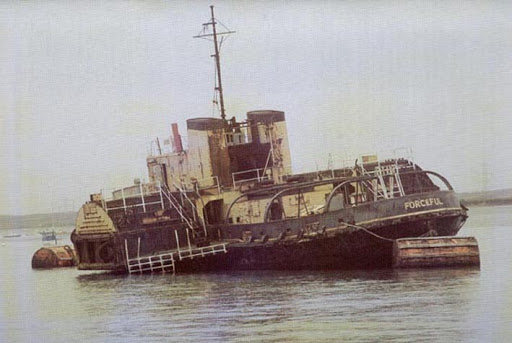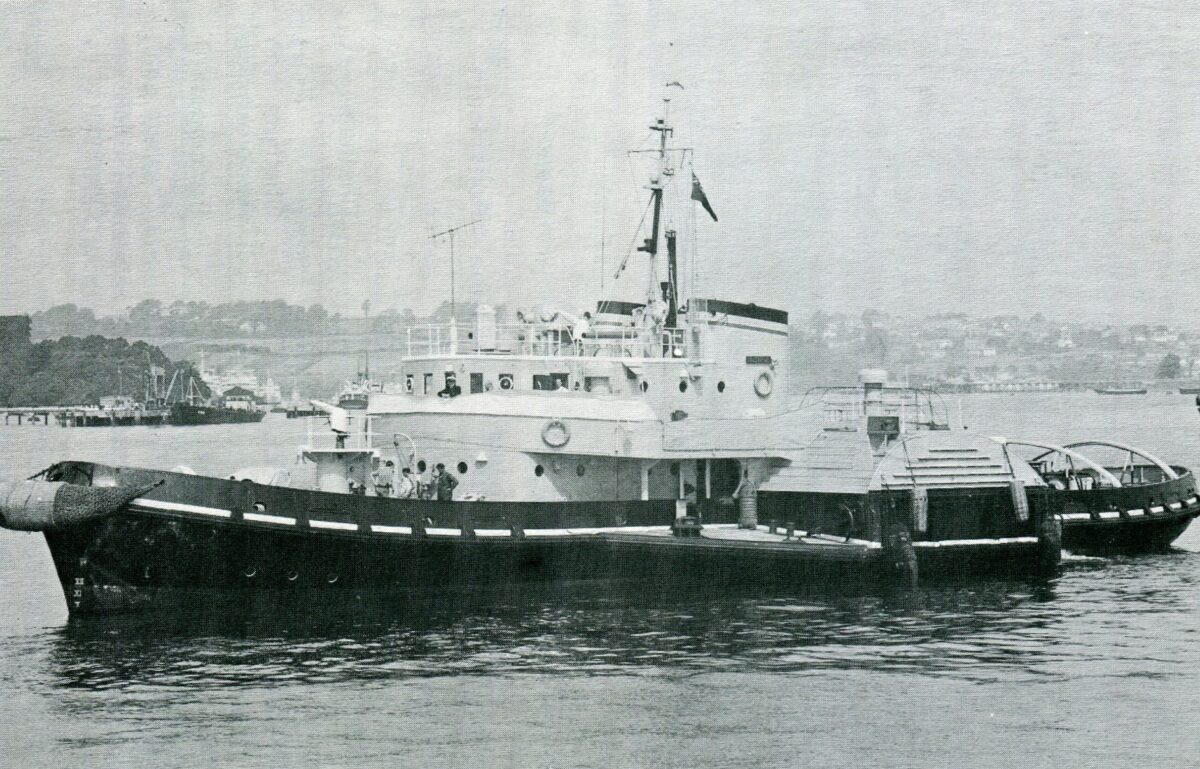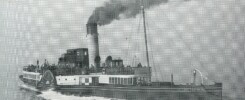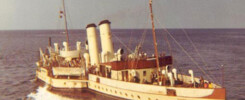
On Wednesday 27th February 1957, Dextrous, built at Yarrows yard at Scotstoun on the Clyde for the Royal Maritime Auxiliary Service, set off bound for Portsmouth. The following year she moved to Gibraltar where she was stationed until November 1981 after which she was sold to shipbreakers in Spain.
All seven of the Director class paddle tugs were ordered primarily for large warship harbour towage. With their dwarf like funnels and low superstructure they were designed to be able to fit easily under any overhanging bits and pieces of large naval warships like the flight decks of aircraft carriers. All were powered by diesel generators which provided the juice for electric motors attached to the paddle shafts. They were bridge controlled and with their independently operated paddle wheels were said to be a dream to handle.
First in the class was the Director built by Yarrows in 1956. Her career took her to Malta where she was stationed until 1969. Towed back to the UK in 1968 she was laid up first at Devonport and then Pembroke Dock before being reactivated for further service at Rosyth in 1970. Surplus to requirements in 1979 she was broken up in Spain the following year.

Faithful of 1957 also came from Yarrows and served first in Gibraltar and then Malta before returning to the UK in 1961 to be based at Devonport. The game was up for her use as a tug by 1981 and she ended her career being deliberately sunk off Gibraltar in April 1983 as a target for training exercises.
Forceful was built in 1957 again by Yarrows and spent all her operational career based at Portsmouth. In 1981 she found a new use as a missile target at the Aberporth Range off the West Coast of Wales after which she was laid up off Queenborough just off the River Medway. There for a time she became a regular feature on KC’s longer day cruises when we used to sail past her close up on our voyages into the Swale. By then as you can see in the picture at the top she was looking a bit sorry for herself.
Favourite came from Ferguson’s yard on the Clyde in 1958 and spent her career based at Devonport until she was sold for scrap in Spain in 1980.
Grinder was built by William Simons of Renfrew in 1958 served throughout at Portsmouth until she was sold for scrap also in Spain also in 1980. The Wessex Branch of the PSPS made a visit to her in 1965 and a report of this event was written up in Paddle Wheels by someone called John Megoran.
Griper also came from Simons in 1958. First based at Rosyth until January 1966 she was relocated to Portsmouth where she served until 1980 when she too was towed to Spain to be scrapped.
All seven of these tugs therefore had operational careers of little more than twenty years. That’s like scrapping a paddle tug today built in the late 1990s.
Tiny Point of Detail: The Royal Maritime Auxiliary Service still had a lot of tugs for use in Naval Dockyards both in the UK and elsewhere back then. Finding names for new groups of often pretty much identical tugs was ever a challenge and called for a good stretch of imagination in the pondering of it.
For example some were named after doggies as in the nineteen tugs of the Dog Class which included Boxer, Mastiff and Spaniel. Then there was the Felicity Class with all nine of them named after what some people might think of as swanky girl’s names including Fiona, Genevieve and Georgina. The Envoy Class all had names beginning with the letter “E” including Envoy, Enchanter and Enticer. And so on.
Given all this necessary head scratching to come up with new and original nomenclature one starts to see why when it came to really large numbers of pretty much identical tugs they sort of gave up the ghost and settled for the easy option of giving them all the same initials followed by a different number. For example TID1, TID2, TID3 and so on right up to TID 165.
And then there are these seven paddle tugs of all of diminutive stature and with short and stumpy funnels. All are named after human characteristics, for good or ill, so there is a theme here. And there are seven of them. Snow White in the Disney movie, still doing the rounds in the 1950s, had seven hard working little helpers all of diminutive stature, with a short and stumpy look about them and whose names also epitomised their personal characteristics. Could there be a link here? Did those responsible for coming up with a naming policy for these paddle tugs think of the Seven Dwarfs when they were doing it. The legal guys might have suggested that there could be copyright issues with using the exact names. But no problem with with choosing seven other names which similarly characterised different aspects of personality. Hence Dextrous, Director, Faithful, Favourite, Forceful, Grinder and Griper.
Kingswear Castle returned to service in 2023 after the first part of a major rebuild which is designed to set her up for the next 25 years running on the River Dart. The Paddle Steamer Kingswear Castle Trust is now fund raising for the second phase of the rebuild. You can read more about the rebuilds and how you can help if you can here.
John Megoran
This article was first published on 27th February 2021.


